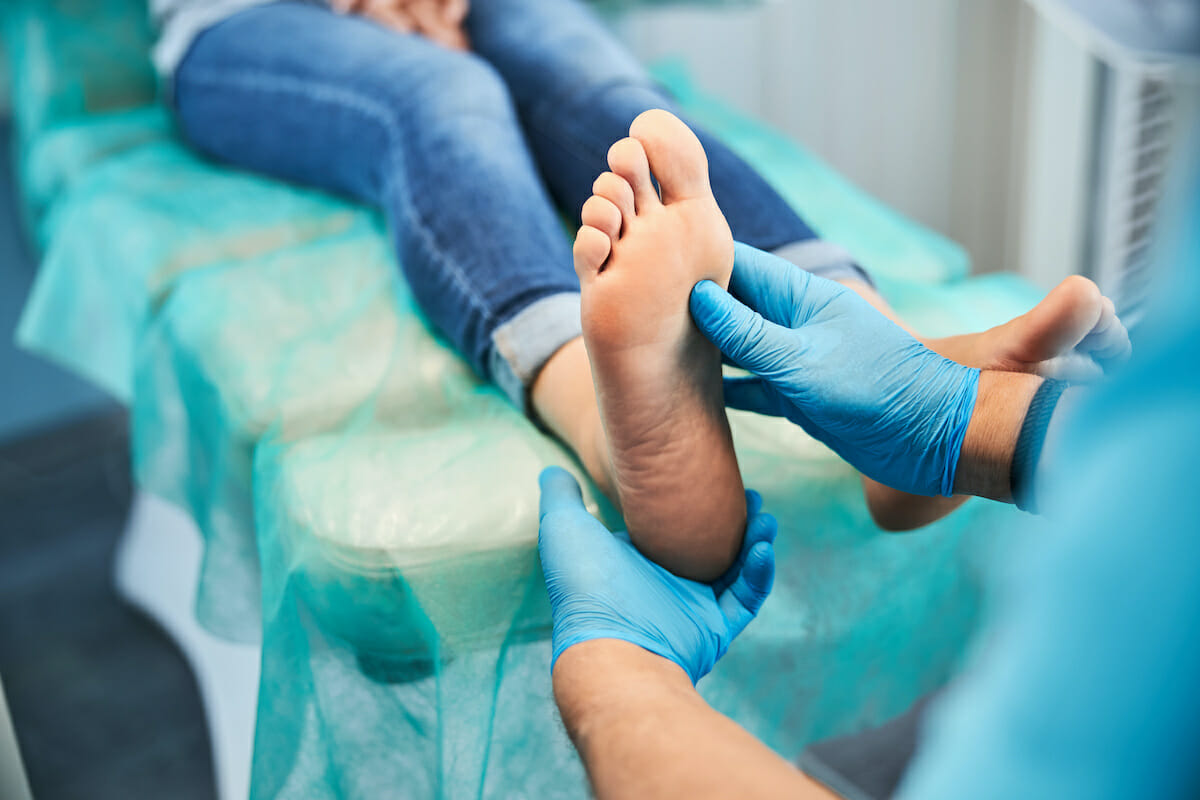
Take steps to protect foot health
Most of us go through each day without ever thinking about our feet. It’s only when something goes wrong that we tend to realize just how important our feet really are.
“Our feet are usually covered with shoes and socks, and they’re easy to forget about, or we might take them for granted,” says Dr. David G. Armstrong, a podiatrist and professor of surgery at the University of Southern California. “But we shouldn’t ignore them. Foot problems can really limit activity and make it hard to move through the world.”
Your feet are surprisingly complex. Each foot has 26 bones, 33 joints, and a network of nerves and blood vessels. Your feet also have more than 100 muscles and connectors, called tendons and ligaments. All of these work together to give your whole body stability and balance as you move around every day.
You can help your hard-working feet stay at their best. Start by being alert to foot pain or other problems that might need a doctor’s care.
Pay Attention to Problems.
The foot’s complexity means there’s a lot that can go wrong. “Foot problems can range from annoying to devastating,” says Dr. Crystal M. Holmes, who heads the podiatry program at Michigan Medicine. “You can have skin problems like athlete’s foot, which is caused by fungus. Or you can have warts, which is a viral infection. These generally are not serious. But certain other skin infections can wreak havoc if left untreated.”
You can also get painful structural problems, like bunions or hammertoes. A hammertoe is a stiff bend in a toe’s middle joint. It can be caused by stubbing your toe or wearing shoes that are too tight. A bunion is a bony bump, usually on the outer side of the big toe. Bunions tend to run in families. Both conditions can first be treated by wearing shoes with plenty of toe room. Eventually, surgery may be needed.
Other common foot problems include sports injuries, toenail troubles, and painful joints. A condition called plantar fasciitis causes sharp heel pain that declines throughout the day. Many people with plantar fasciitis recover in a few months, in part by avoiding the activities that cause pain. If the pain lasts longer, medical treatment may be needed.
Your feet can also provide early clues to problems in other parts of your body. For example, stiff joints in your feet or ankles could be a sign of arthritis elsewhere. Swollen feet could warn of high blood pressure or kidney or heart disease. Tingling, burning, or numbness might signal some type of nerve damage. And nerve damage in the foot is often a warning sign of diabetes.
Foot Health and Diabetes.
People who have diabetes need to pay special attention to their feet. Diabetes affects about one in 10 Americans. Most people with diabetes—about 60% to 70%—develop nerve problems. These can range from mild to severe. Diabetic nerve damage, or diabetic neuropathy, can make you lose feeling in your feet, which can be dangerous.
Delayed detection of wounds or burns can lead to delayed treatment. And delayed treatment raises the risk of infection. Foot infections can be especially harmful to people with diabetes. Good blood flow helps to heal foot wounds and deliver medications like antibiotics that can help fight infections. But diabetes reduces blood flow to the feet. That can prevent infections from healing.
When infections don’t heal, amputation of a toe, foot, or part of the leg may be needed. Amputation can prevent a deadly infection from spreading to the rest of the body. But amputations are risky and can seriously affect quality of life.
If the Shoe Fits. . .
No matter your age or health conditions, wearing well-fitting, supportive shoes can have a big effect on your health. But research suggests that many of us wear shoes that are the wrong size or ill-fitting.
Your feet tend to widen a bit as you get older, and they can also widen during pregnancy, So, if your foot size was measured at age 20, it probably won’t be the same years later. Feet also tend to gradually widen as the day goes on. It’s often recommended that if you’re shopping for new shoes, go in the afternoon or evening when your feet are a little bigger. If your feet haven’t been measured in a while, consider doing so. A foot-measuring device can measure both the length and width of your feet. It’s usually available at shoe stores.
Experts suggest leaving a little space at the front of the shoe, because when we walk, our feet tend to shift forward.
Make sure that the shoes are comfortable from the start. If they don’t feel right, don’t think that you can break them in later. That could cause blisters and pain. Pain is meant to be a cardinal sign to tell you that something is wrong. When you don’t listen to it, you get in trouble.
Any time you have foot pain that lingers, it’s a good idea to see a health care provider. Give your feet the attention they deserve.
“I suggest to my patients that when you go to your doctor, and you take your clothes off for the exam, make sure you take off your shoes and your socks too. Have the doctor take a look at your feet,” Holmes says. “it’s important to catch foot problems sooner than later.”Source:https://newsinhealth.nih.gov/2023/03/focus-your-feet











